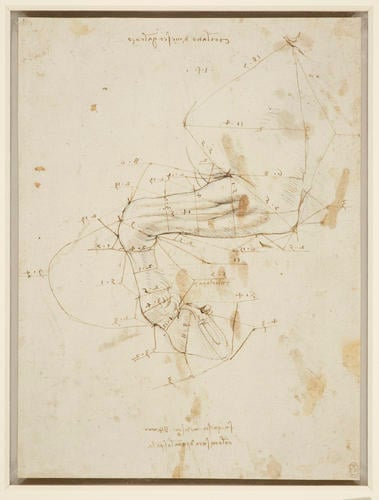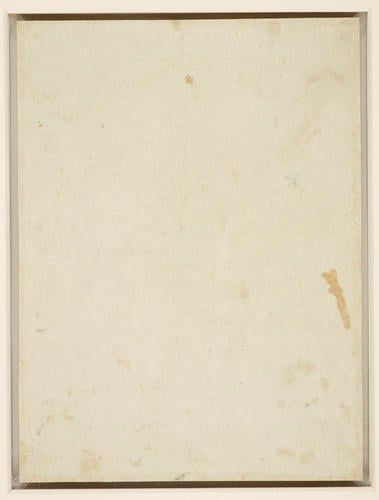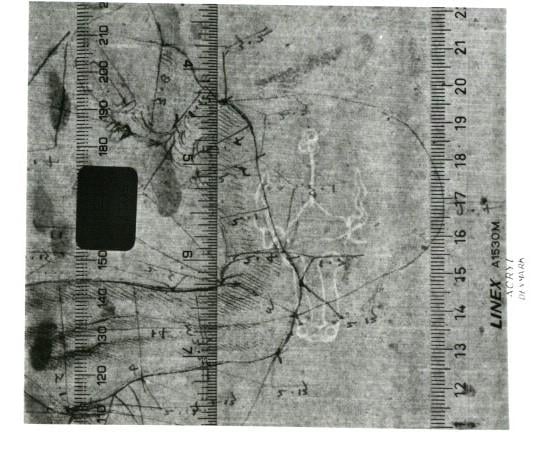-
1 of 253523 objects
A horse's left foreleg, with measurements c.1490-92
Leadpoint, pen and ink, staining | 25.0 x 18.7 cm (sheet of paper) | RCIN 912294
-
A study of the near foreleg and shoulder of a horse, in profile to the left, the leg raised and bent, the hoof upturned; divided into sections with measurements below; with two notes. Melzi's number 41.
Most of Leonardo’s measured drawings of horses (eg. RCIN 912319) show the animal standing on all four legs, but several details study the dimensions of the raised left foreleg. This was the intended final form of Leonardo's monument to Francesco Sforza, and is seen in exactly this pose in a sketch of the frame for the transport of the clay model, where the hoof rests on a vase (Milan, Biblioteca Ambrosiana, Codex Atlanticus, f. 216v-a).
In the note below this drawing Leonardo reminds himself to ‘make this the same within [i.e. from the other side of the leg] with the measurement of the whole shoulder.’ The drawing is also labelled Cicilano dj meser galeazo, identifying the model as a ‘Sicilian’ belonging to Galeazzo da Sanseverino (see also 912319), and the subject of many of Leonardo’s equine studies (as recorded in a manuscript known as the Codex Huygens in the Morgan Library, New York, fols. 71-3, 77, 80, 84, 86). The Sicilian is still an admired cavalry horse, and was probably the breed intended for the Sforza monument.
Leonardo’s surveys of horses were drawn freehand and the measurements added – the drawings were not constructed from these measurements. Thus Leonardo never had to confront the real problems that would face an artist attempting to put together a horse (whether drawn, painted or sculpted) from such a plethora of dimensions. If the measured drawings were used at all during Leonardo’s preparations for the Sforza monument, it is more likely that they served as a check on the dimensions of the clay model. The statue was to be about three times life size, and errors of proportion would have been difficult to apprehend when working close to the clay model.
Here Leonardo used the same system of measurement as in 912319, with the basic unit one-sixteenth of a head, subdivided into further sixteenths; for example, he gives the length of the upper profile of the foreleg as ‘8.6’, that is, eight sixteenths and six sixteenth-sixteenths, or 0.523 of a head. While his focus was on the dimensions, Leonardo was also careful to model the superficially visible muscles accurately, and extensor carpi radialis, common digital extensor and ulnaris lateralis are all prominent in the foreleg.
Text adapted from M. Clayton and R. Philo, Leonardo da Vinci: Anatomist, 2012, no. 19.Provenance
Bequeathed to Francesco Melzi; from whose heirs purchased by Pompeo Leoni, c.1582-90; Thomas Howard, 14th Earl of Arundel, by 1630; probably acquired by Charles II; Royal Collection by 1690
-
Creator(s)
Acquirer(s)
-
Medium and techniques
Leadpoint, pen and ink, staining
Measurements
25.0 x 18.7 cm (sheet of paper)
Markings
watermark: Bull's head with tri-orb (cf. Briquet 14431, Milan 1492) [-]
Category
Object type(s)
Other number(s)


